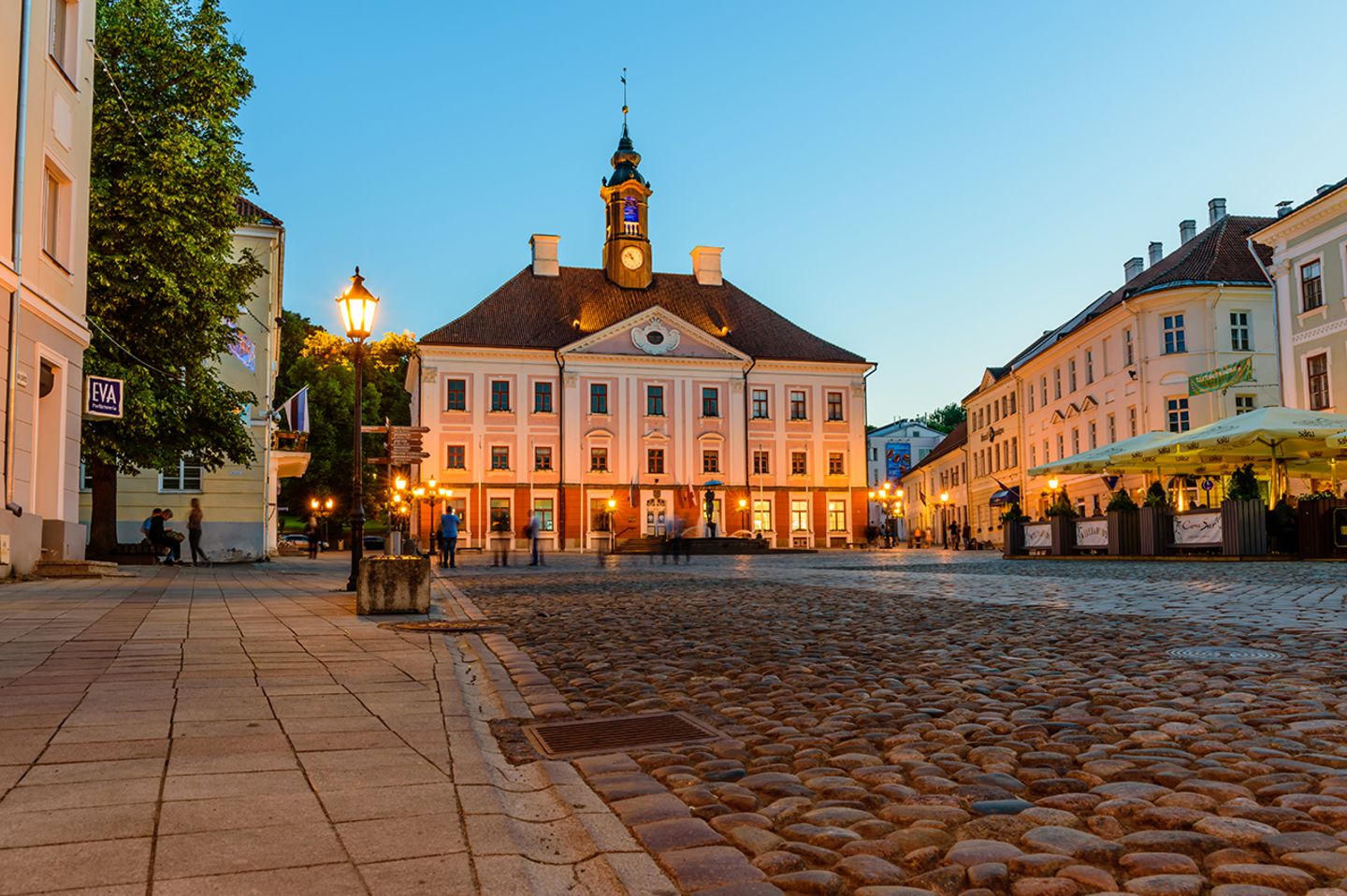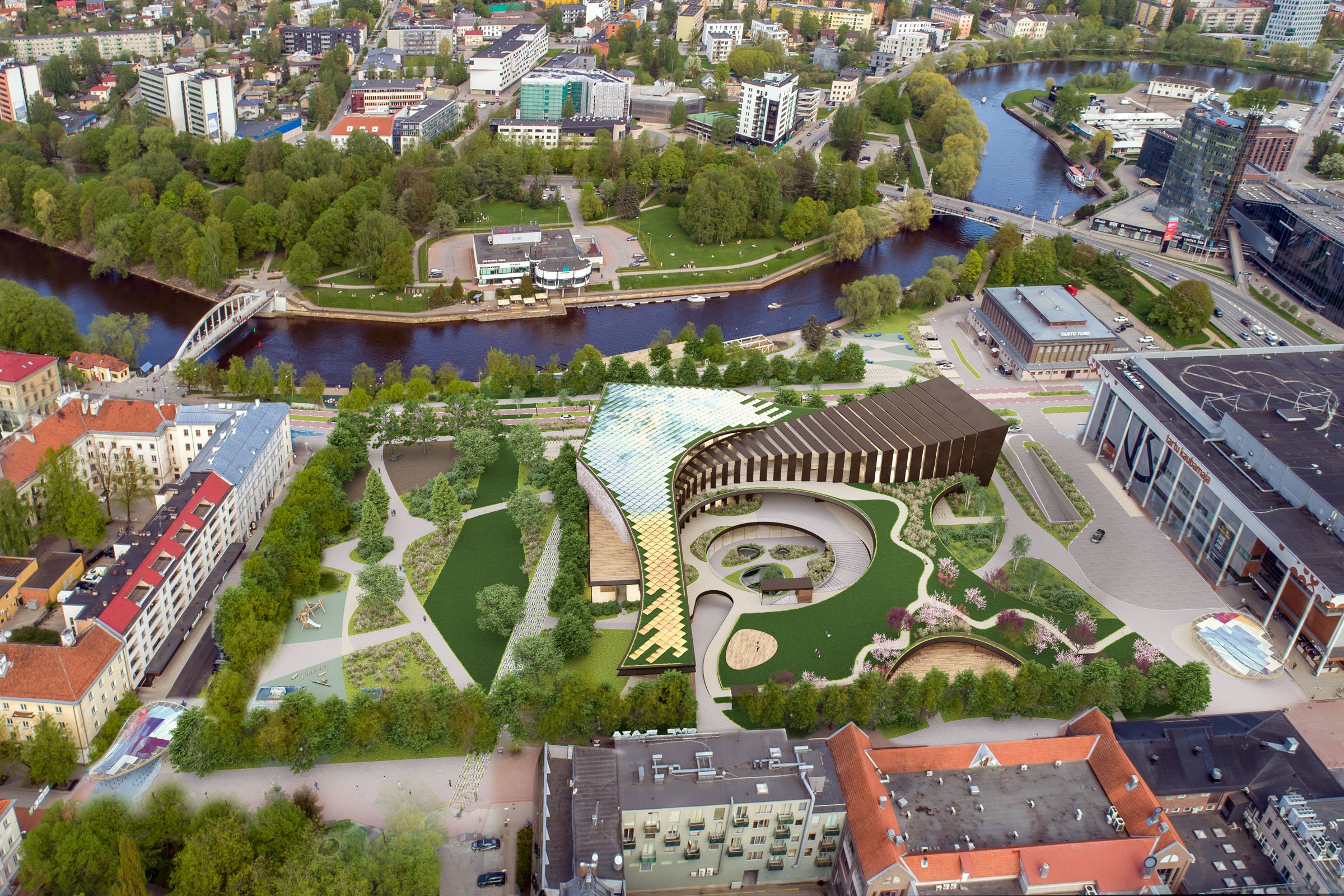



Tartu is a city in eastern Estonia. It’s known for the prestigious, 17th-century University of Tartu. The old town centers on the university’s neoclassical main building, and the cafe-filled Town Hall Square, home to the Kissing Students fountain. The modern Science Centre AHHAA has hands-on exhibits and a 4D cinema. The ruined Tartu Cathedral, in hilltop Toomemägi Park, has 2 restored towers with viewing platforms.
Summer (June – August): The best time to visit, with warm weather (15–25°C), outdoor events, and a lively student atmosphere.
Spring (April – May) & Autumn (September – October): Pleasant weather, fewer tourists, and beautiful seasonal colors.
Winter (December – February): Cold and snowy, but perfect for cozy cafes and the magical Christmas market.
By Air: The nearest airport is Tartu Airport (TAY), with limited flights. Most visitors fly into Tallinn Airport and take a bus or train.
By Train: Trains from Tallinn take around 2 hours.
By Bus: Buses from Tallinn, Riga, and other Estonian cities are frequent and affordable.
By Car: A scenic 2-hour drive from Tallinn via the E263 highway.
Tartu University & Main Square – The historic university (founded in 1632) is the heart of the city.
Toome Hill Park – A peaceful park with stunning city views and old university ruins.
Estonian National Museum – A must-visit for learning about Estonia’s history and culture.
Tartu Cathedral Ruins – A beautiful, partially restored medieval cathedral.
AHHAA Science Centre – An interactive science museum perfect for all ages.
The Upside-Down House – A fun and unique experience where everything is inverted.
Emajõgi River Promenade – A scenic walkway along the river, great for a relaxing stroll.
Supilinn (Soup Town) – A quirky neighborhood with colorful wooden houses.
Kissing Students Fountain – The symbol of Tartu, located in the Town Hall Square.
Tartu Toy Museum – A nostalgic collection of toys from different eras.
Join a Student Pub Crawl – Experience Tartu’s vibrant nightlife with university students.
Explore Karlova & Supilinn – These artistic districts are full of street art and cute cafes.
Go Biking or Canoeing on the Emajõgi River – A great way to see the city from a different perspective.
Relax in a Traditional Sauna – Estonians love their saunas, and Tartu has great options.
Attend Tartu’s Festivals – Including Tartu Hanseatic Days (medieval fair) and the Literary Festival.
Luxury:
Hotel Lydia – A stylish 4-star hotel with a spa and great location.
V Spa & Conference Hotel – A modern hotel with an excellent wellness center.
Mid-Range:
Art Hotel Pallas – A trendy hotel with artistic decor.
Tampere Maja – A cozy, historic guesthouse in the Old Town.
Budget:
Looming Hostel – An eco-friendly hostel with a creative vibe.
Hektor Design Hostel – A modern budget-friendly place with private and dorm rooms.
Traditional Estonian Cuisine:
Hansa Tall – A medieval-style restaurant with hearty Estonian food.
Werner Café – One of the oldest cafés in Estonia, famous for its cakes and pastries.
Modern & Trendy:
Aparaat – A hip restaurant with fusion cuisine and a cool industrial vibe.
Krempel – A trendy spot with great brunch options.
Casual & Budget-Friendly:
Kolm Tilli – A relaxed eatery with amazing pizzas and craft beer.
Meat Market Steak & Cocktail – Perfect for steak lovers.
University Life: Tartu is Estonia’s student capital, and university traditions are an essential part of life here.
Tartu Spirit: Locals take pride in the city’s bohemian and intellectual atmosphere.
Tipping: 5–10% is standard in restaurants, though not required.
Folk Traditions: The Estonian National Museum highlights Estonia’s folk culture and traditions.